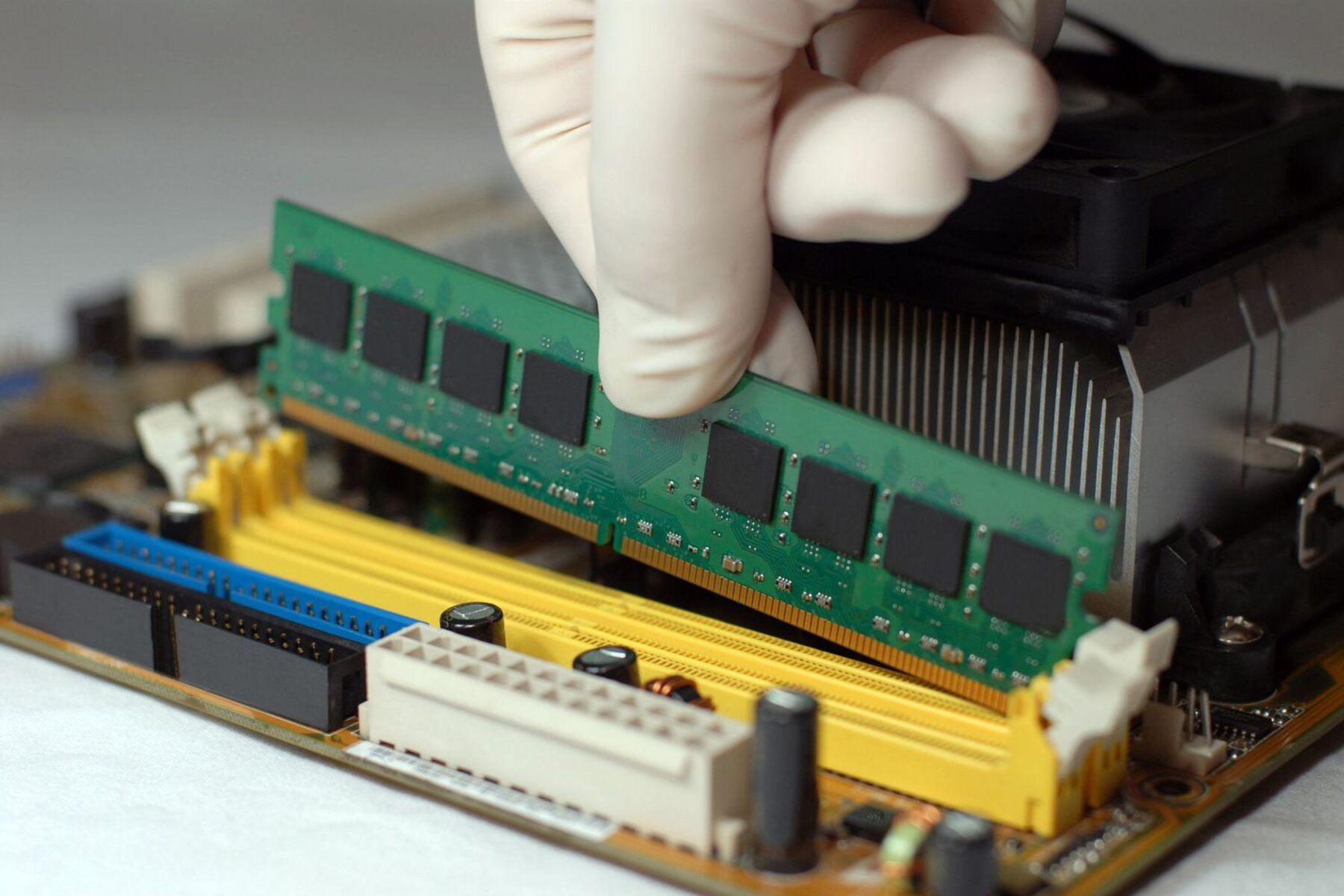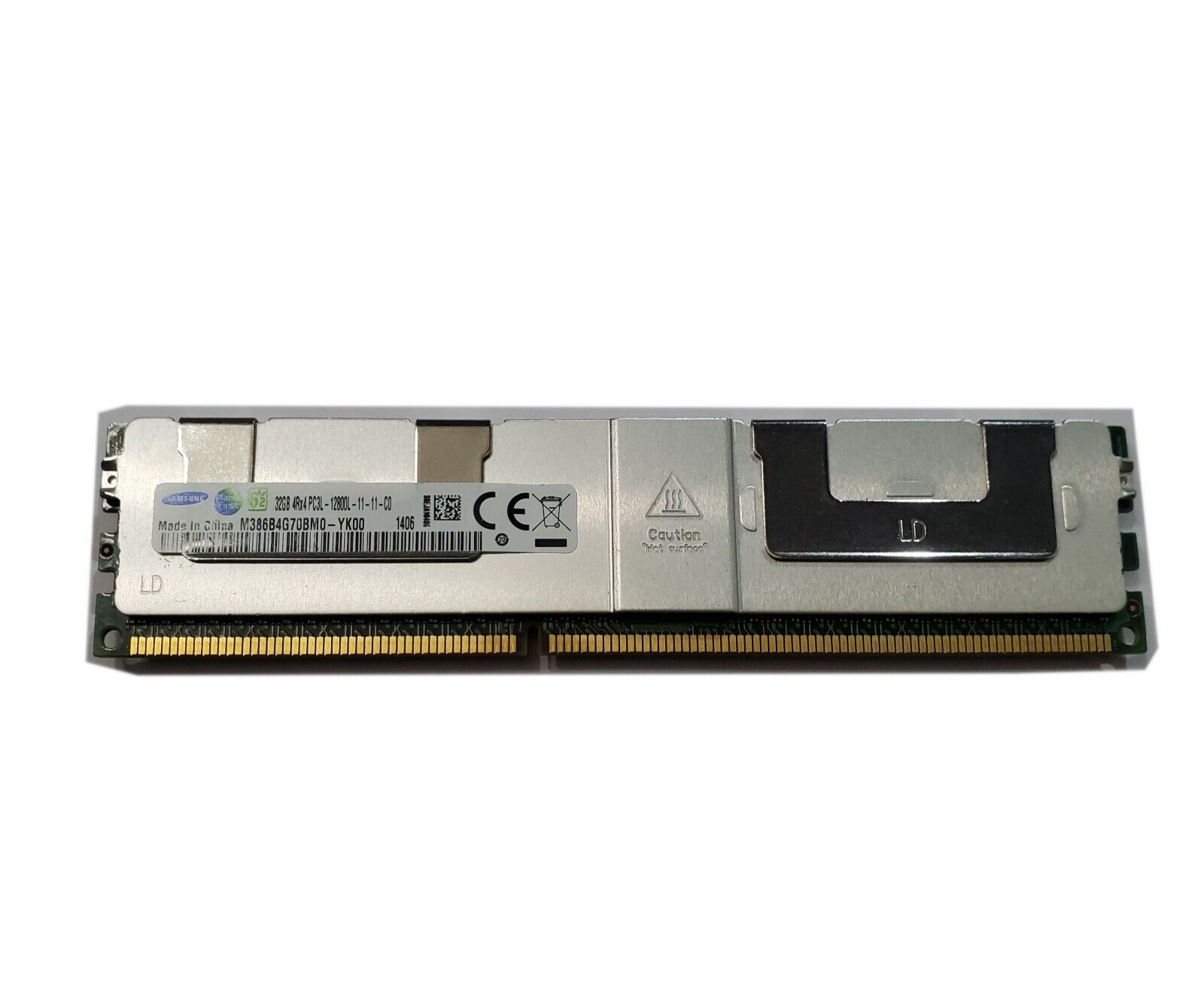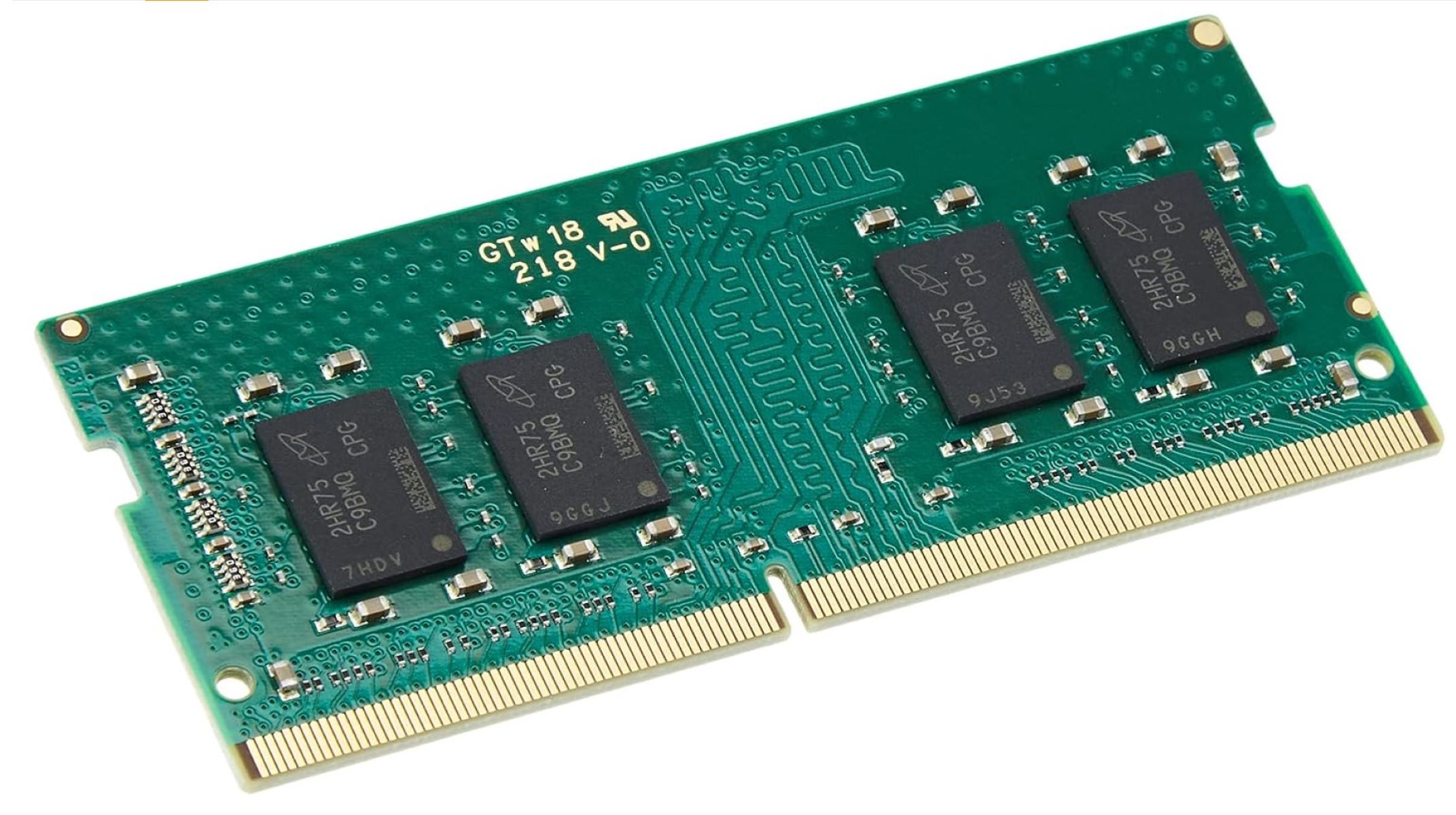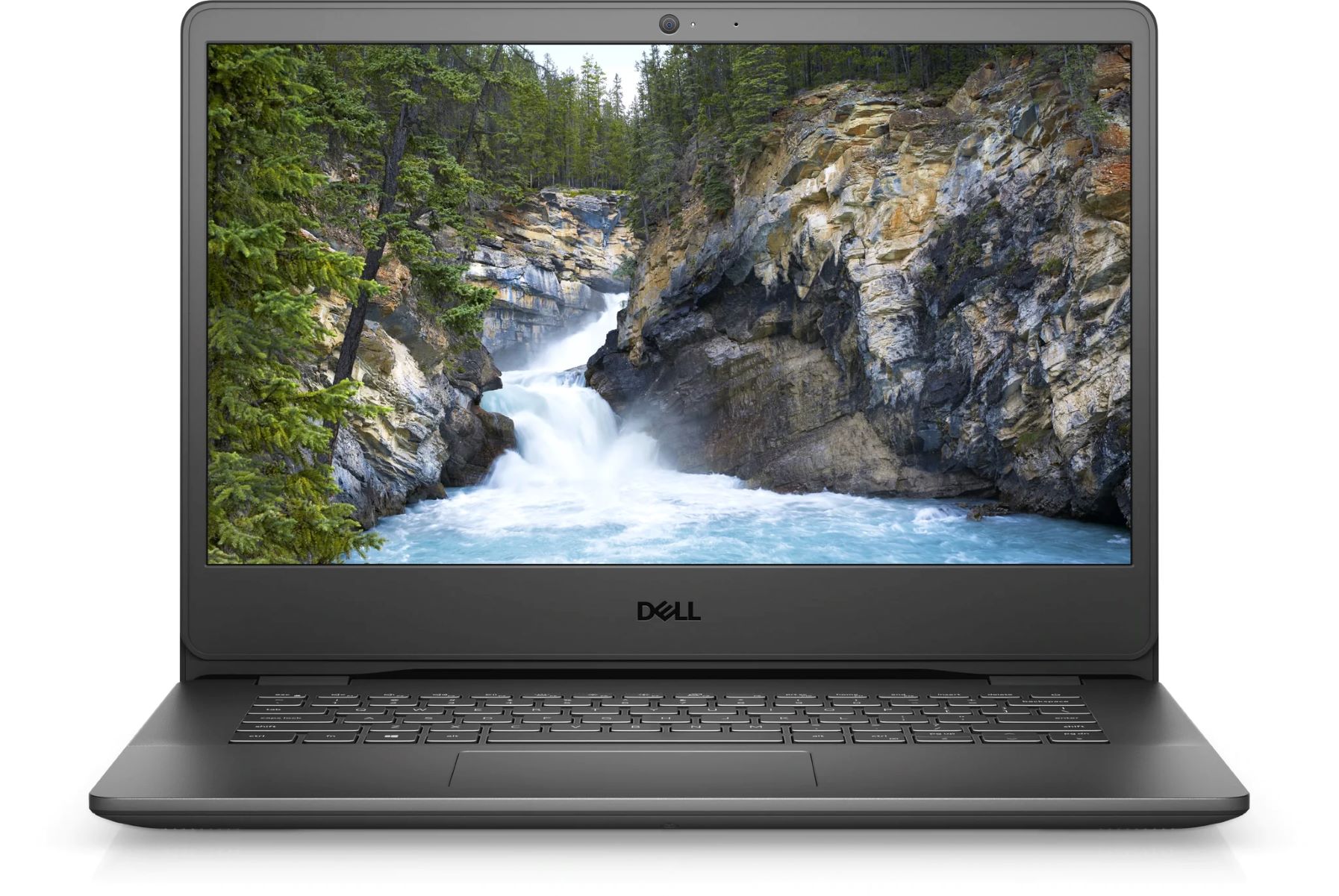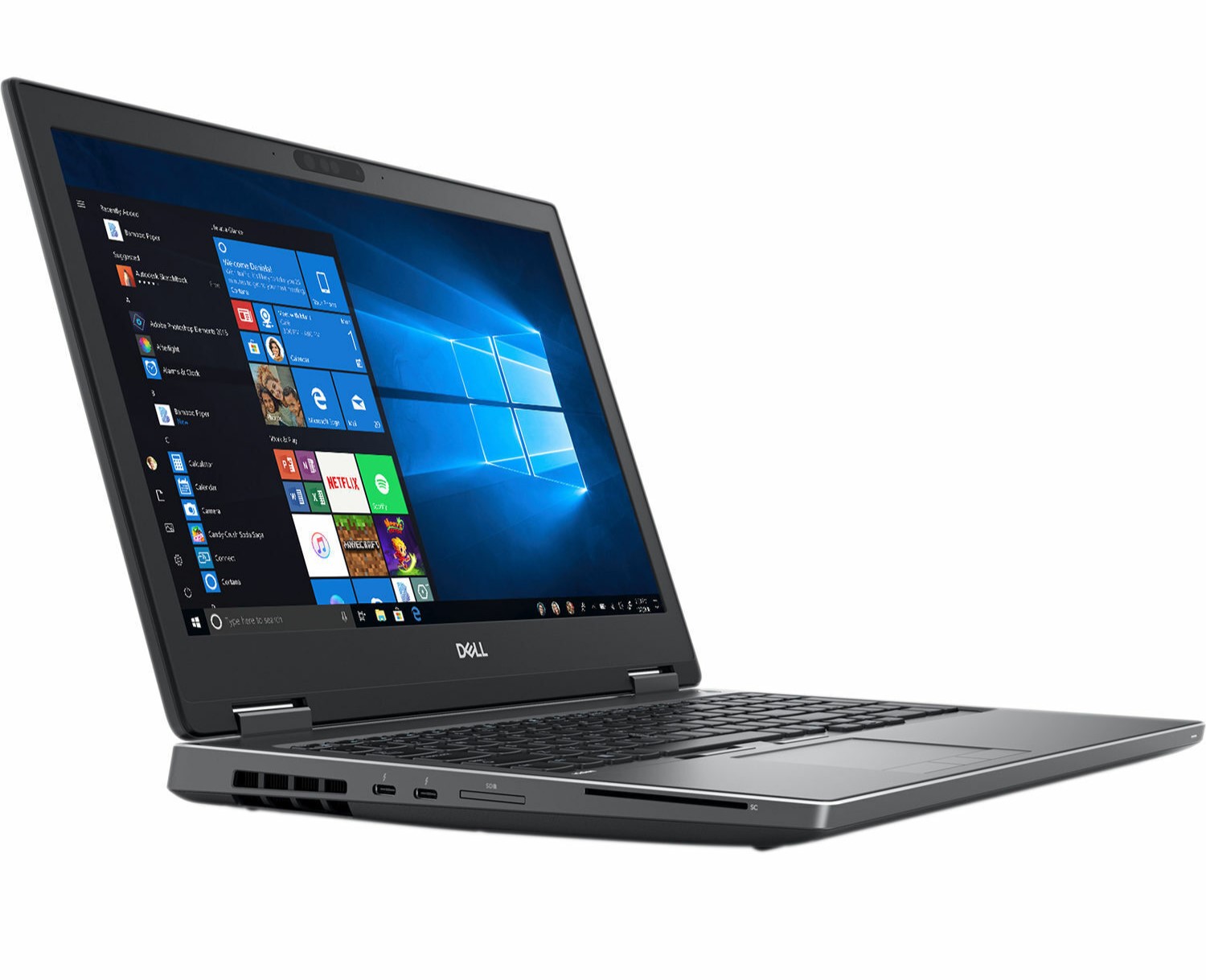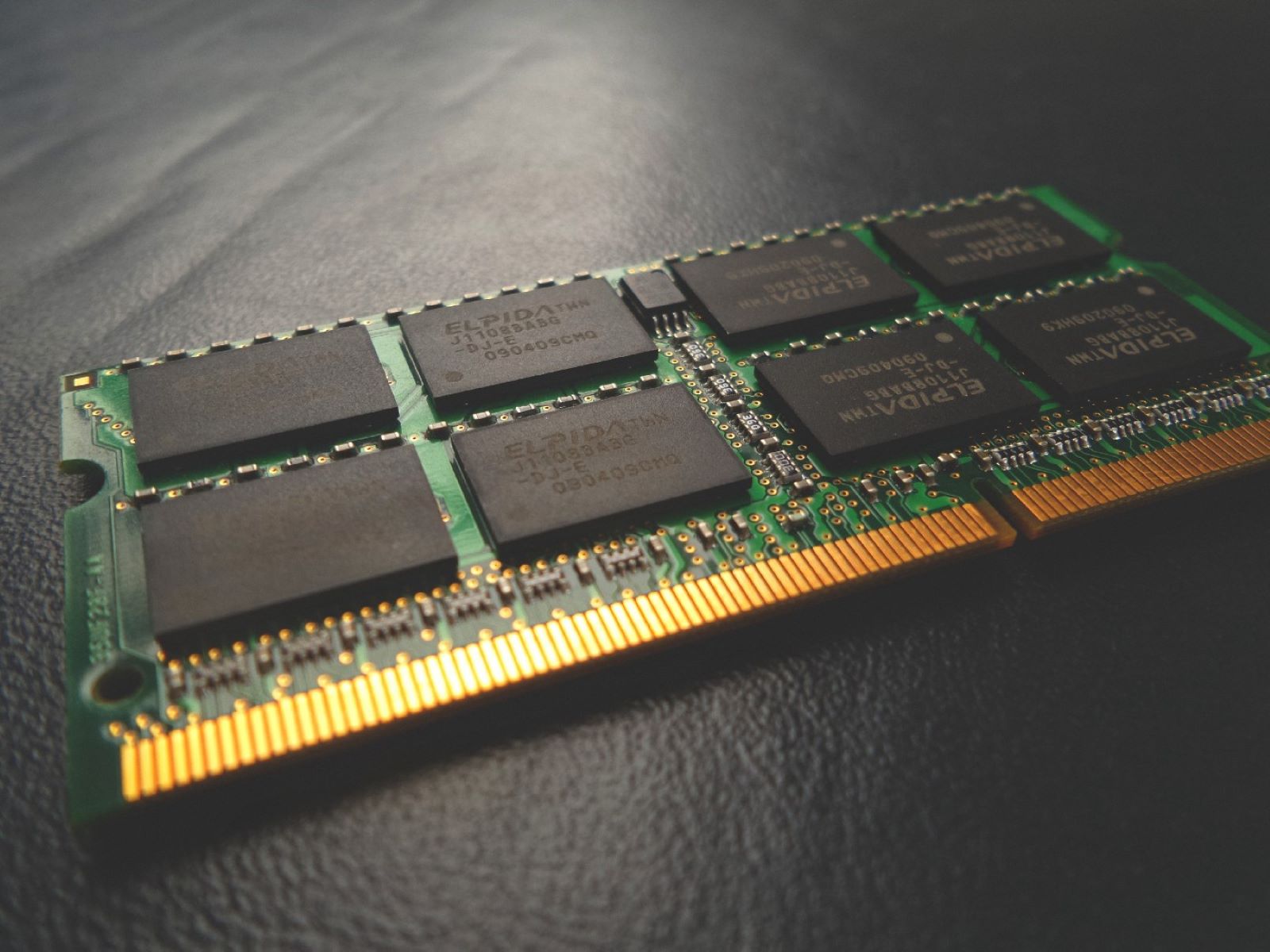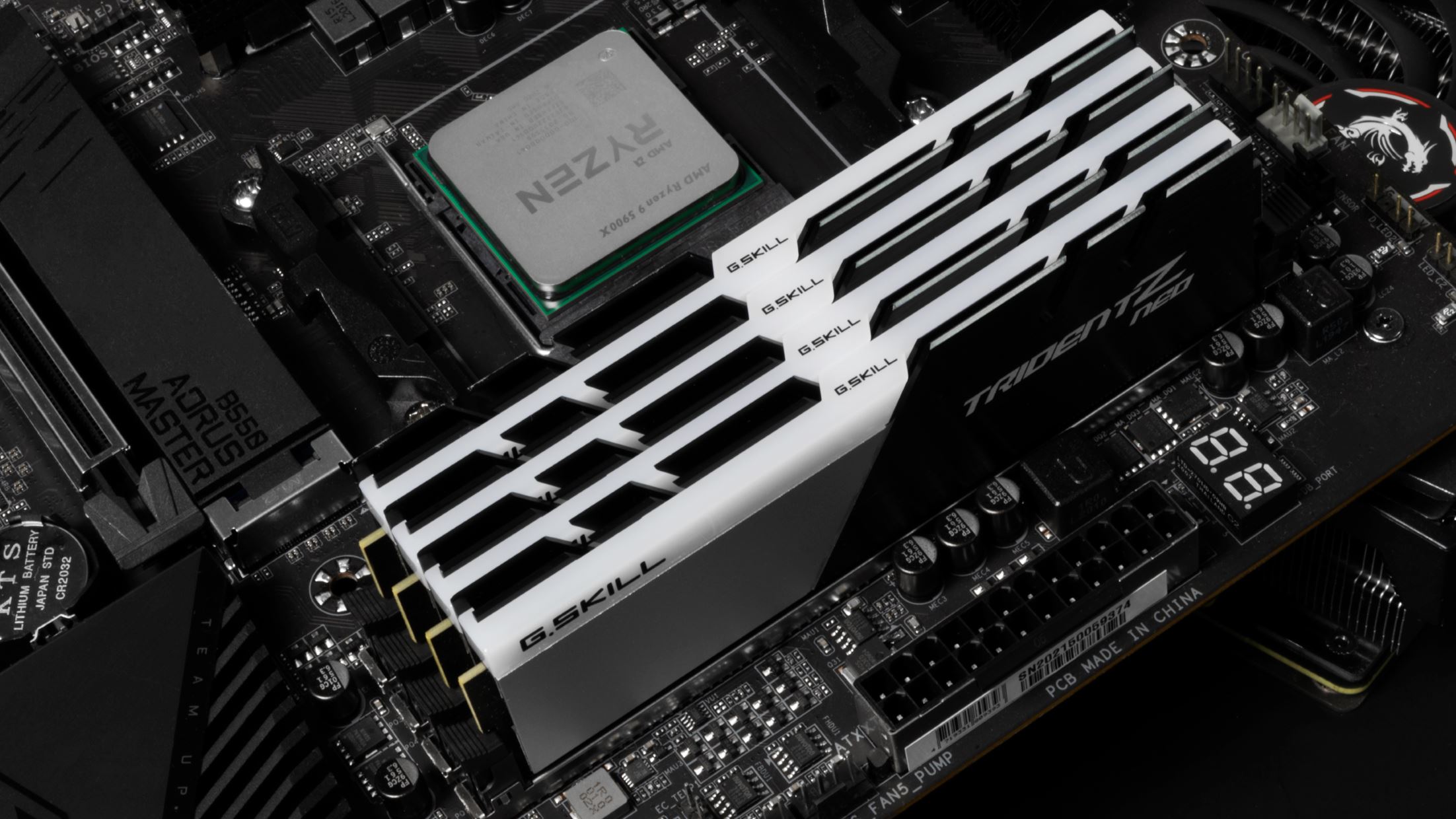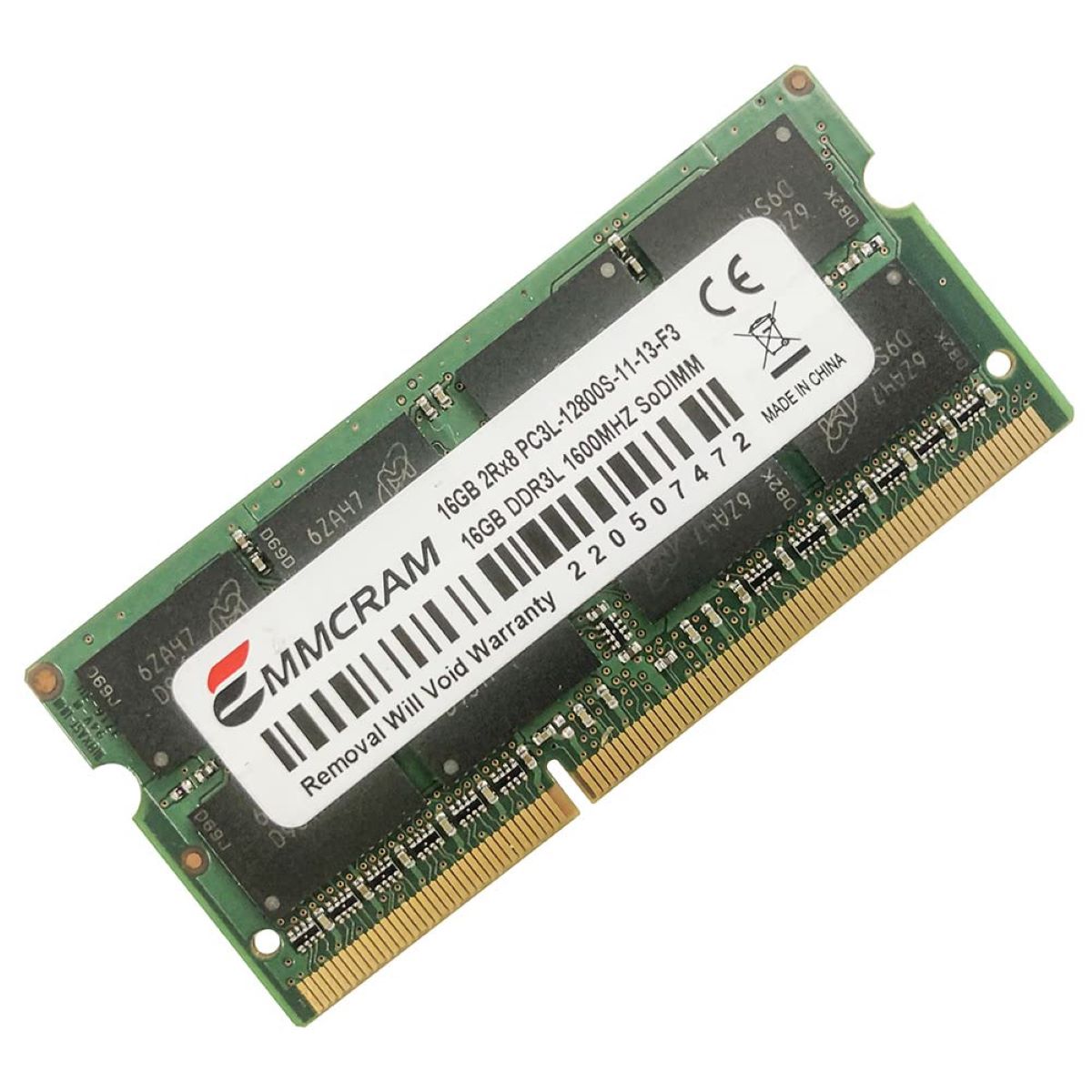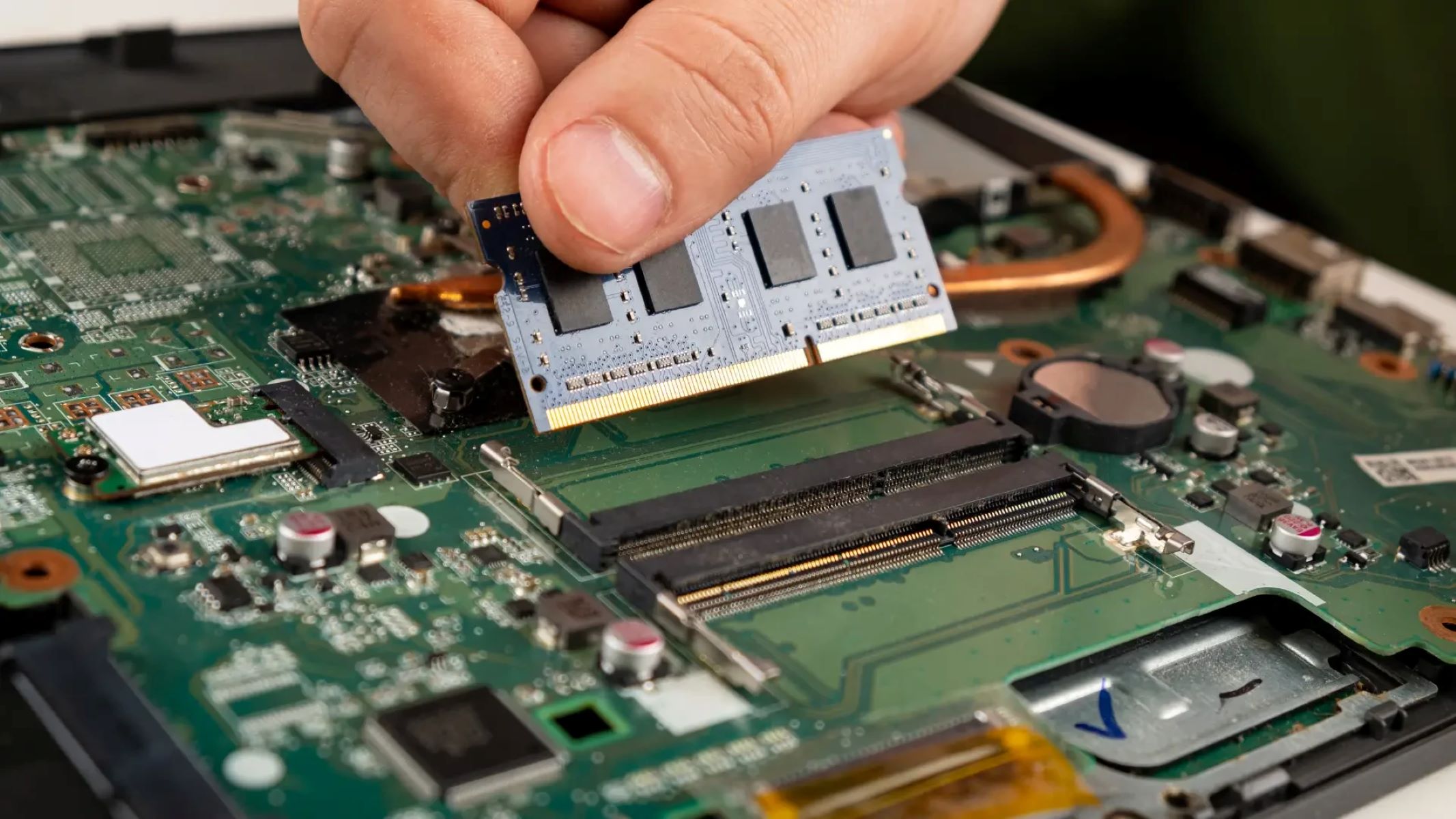Introduction
When it comes to understanding the inner workings of a computer, one component that often comes to mind is the RAM module. Whether you’re a casual computer user or a tech enthusiast, it’s important to have a basic understanding of what RAM is and how it functions.
RAM, or Random Access Memory, is a vital component in any computer system. It plays a crucial role in storing and accessing data that is actively being used by the computer’s processor. Unlike the long-term storage provided by a hard drive or solid-state drive, RAM offers fast and temporary storage for the data that the computer needs to access quickly.
The importance of RAM in a computer cannot be overstated. It directly affects the speed and performance of a computer, allowing it to handle multiple tasks simultaneously and efficiently. Without sufficient RAM, your computer may experience slowdowns, lags, and even crashes when running resource-intensive applications or multitasking.
In this article, we will delve into the intricacies of RAM modules to give you a comprehensive understanding of what they are, how they are structured, and how they can be upgraded or replaced to enhance your computer’s performance. We will explore the different types of RAM modules, their physical components, sizes, connectors, and provide tips on installation and upgrade processes.
Whether you are a computer enthusiast looking to upgrade your system’s RAM or simply curious about the inner workings of a computer, this article will serve as a valuable guide to understanding RAM modules and their role in optimizing your computer’s performance.
What is RAM?
RAM, or Random Access Memory, is a vital component in any computer system. It is a type of volatile memory that allows the computer’s processor to quickly and temporarily store and access data that is actively being used. Unlike permanent storage devices such as hard drives or solid-state drives, RAM is designed for fast access and is cleared when the computer is powered off or restarted.
Think of RAM as a workspace for your computer’s processor. In order to perform tasks, the processor needs to access data and instructions from memory. When you open an application or run a program, it is loaded into RAM, allowing the processor to quickly access the necessary data. The more RAM your computer has, the more data it can store and access simultaneously, resulting in smoother and faster performance.
RAM operates at a much faster speed than traditional storage drives. While hard drives and solid-state drives rely on spinning disks or flash memory to retrieve data, RAM offers near-instantaneous access times. This speed allows the processor to retrieve information quickly, reducing processing delays and improving overall system performance.
One important characteristic of RAM is its volatility. This means that the data stored in RAM is lost when the computer is powered off or restarted. It is crucial to save any important files or documents to a permanent storage device, such as a hard drive or solid-state drive, to avoid losing them.
Another key aspect of RAM is its capacity. RAM modules come in different sizes, ranging from a few gigabytes (GB) to several terabytes (TB). The amount of RAM your computer needs depends on the type of tasks you perform. If you use your computer for basic browsing, word processing, and email, a lower amount of RAM may be sufficient. However, for tasks such as video editing, graphic design, or gaming, a larger amount of RAM is recommended to ensure smooth and efficient operation.
In the next sections, we will explore the different types of RAM modules, their physical components, sizes, connectors, and how to install or upgrade them to enhance your computer’s performance.
The Importance of RAM in a Computer
RAM, or Random Access Memory, plays a crucial role in the performance of a computer. It is an essential component that directly impacts how quickly and efficiently your computer can handle tasks and run applications. Understanding the importance of RAM can help you make informed decisions when upgrading or purchasing a new computer.
One of the primary functions of RAM is to provide temporary storage for data that is actively being used by the computer’s processor. When you open an application or run a program, it is loaded into RAM, allowing the processor to access the necessary data quickly. The more RAM your computer has, the more data it can store and access simultaneously.
This increased capacity allows for smoother multitasking, as your computer can handle multiple applications and processes concurrently without experiencing significant slowdowns or performance issues. With sufficient RAM, you can seamlessly switch between tasks, run resource-intensive applications, and perform complex operations without causing your computer to lag or freeze.
In addition to multitasking, RAM also plays a crucial role in gaming. Many modern games require a substantial amount of memory to run smoothly and provide an immersive experience. Insufficient RAM can lead to game lag, slow loading times, and a decrease in overall performance. By having an adequate amount of RAM, you can ensure that your games run smoothly, allowing you to fully enjoy the gaming experience.
RAM is also vital for resource-intensive tasks such as video editing, graphic design, and 3D modeling. These tasks require large amounts of memory to process and manipulate large files and complex data sets. Insufficient RAM can result in slow rendering times, system crashes, and compromised performance. By increasing the amount of RAM in your computer, you can significantly improve the speed and efficiency of these demanding tasks.
Furthermore, the speed of RAM is crucial for overall system performance. RAM operates at much faster speeds than traditional storage drives, allowing the computer’s processor to retrieve data quickly. This fast access time reduces processing delays and improves the overall responsiveness of your computer.
Overall, RAM is a critical component that directly impacts the speed, multitasking capability, and overall performance of your computer. Whether you use your computer for everyday tasks, gaming, or resource-intensive applications, having sufficient and fast RAM can make a noticeable difference. If you find that your computer is slow, lags, or struggles to handle demanding tasks, upgrading your RAM may be a cost-effective way to improve performance and enhance your computing experience.
Types of RAM Modules
RAM modules come in different types, each with its own set of characteristics and specifications. Understanding the different types of RAM can help you choose the one that best suits your computer’s needs. The most common types of RAM modules in use today include:
1. DDR4: DDR4, or Double Data Rate 4, is the latest and most widely used type of RAM. It offers faster data transfer rates, higher bandwidth, and improved power efficiency compared to its predecessors. DDR4 RAM modules are commonly found in modern laptops, desktops, and servers.
2. DDR3: DDR3, or Double Data Rate 3, was the previous generation of RAM before DDR4. Although DDR4 has superseded DDR3, DDR3 RAM modules are still in use in older computers. DDR3 offers slightly slower data transfer rates and consumes more power compared to DDR4.
3. DDR2: DDR2, or Double Data Rate 2, is an earlier generation of RAM that is becoming increasingly obsolete. It has slower data transfer rates and lower capacity compared to DDR3 and DDR4. DDR2 RAM modules are now primarily found in legacy systems.
4. DDR: DDR, or Double Data Rate, was the first generation of DDR RAM modules. It is significantly slower than DDR2 and later versions, making it rare in modern computers. DDR RAM modules are now considered outdated and are only found in very old systems.
It is important to note that DDR4 RAM modules are not compatible with motherboards that only support DDR3 or earlier versions. Make sure to check your computer’s specifications before purchasing RAM to ensure compatibility.
In addition to the types of RAM modules, different RAM modules may also have different operating frequencies or clock speeds. Higher clock speeds result in faster performance, so it is advisable to choose RAM modules with higher frequencies if your system supports them.
Upgrading your RAM to a higher generation or faster clock speed can significantly improve your computer’s performance, especially if you are running memory-intensive applications or multitasking heavily.
Now that you have an understanding of the different types of RAM modules, let’s move on to explore the anatomy of a RAM module in the next section.
Anatomy of a RAM Module
Understanding the anatomy of a RAM module can help demystify its structure and components. While the external physical appearance of RAM modules may differ between manufacturers, the internal components remain largely the same. Let’s explore the key components that make up a RAM module:
1. Memory Chips: The memory chips, also known as integrated circuits (ICs), are the primary storage units of a RAM module. These chips are responsible for storing and retrieving data. Each chip can store a certain amount of data, typically measured in gigabytes (GB) or megabytes (MB).
2. Pins or Contacts: The pins or contacts are the metal connectors located on the bottom edge of the RAM module. These pins or contacts establish electrical connections between the RAM module and the motherboard’s memory slot. Different types of RAM modules have varying numbers and arrangements of pins or contacts.
3. Printed Circuit Board (PCB): The PCB serves as the foundation for mounting the memory chips and other components of the RAM module. It provides electrical pathways that connect the memory chips to the pins or contacts.
4. Heat Spreader: Some RAM modules feature a heat spreader, which is a metal or plastic covering that helps dissipate heat generated by the memory chips. The heat spreader promotes better cooling and can enhance the overall stability and performance of the RAM module.
5. Serial Presence Detect (SPD) Chip: The SPD chip, located on the RAM module’s PCB, contains information about the module, such as its speed, capacity, and timing specifications. This information is read by the computer’s BIOS (Basic Input/Output System) to configure the RAM module correctly.
6. Retention Clips: Many RAM modules have retention clips or locks on the sides that securely hold the module in place when inserted into the memory slot. These clips ensure a stable connection between the RAM module and the motherboard.
It is important to handle RAM modules with care, avoiding excessive force or static electricity that can damage the delicate components. When installing or removing RAM modules, ensure that the computer is powered off and unplugged.
Now that you are familiar with the anatomy of a RAM module, let’s move on to explore the different sizes of RAM modules in the next section.
Different RAM Module Sizes
RAM modules come in various sizes, commonly referred to as form factors. The size of a RAM module determines its physical dimensions and compatibility with different computer systems. Understanding the different RAM module sizes can help you choose the appropriate module for your specific needs. Here are the most common RAM module sizes:
1. DIMM (Dual Inline Memory Module): DIMM is the standard form factor for desktop computers and servers. It features a rectangular shape with notches on the bottom, ensuring proper alignment with the memory slot on the motherboard. DIMMs are available in various sizes, including full-sized (regular) DIMMs, sometimes referred to as UDIMMs (Unbuffered DIMMs), and smaller variants like SO-DIMMs (Small Outline DIMMs), which are commonly used in laptops and smaller form factor systems.
2. SODIMM (Small Outline DIMM): SODIMMs are smaller and more compact than regular DIMMs. They are primarily used in laptops, all-in-one computers, and mini PCs, where space is limited. SODIMMs are about half the size of regular DIMMs, making them ideal for smaller form factor systems that require high-performance memory modules.
3. MicroDIMM: MicroDIMMs are even smaller than SODIMMs, primarily used in ultra-compact systems like netbooks, tablets, and embedded devices. MicroDIMMs have a significantly reduced physical footprint, allowing them to be used in space-constrained systems while still offering decent performance.
Each RAM module size has its own corresponding memory slot on the motherboard. It is crucial to ensure that the size and type of RAM module you purchase are compatible with your computer system’s memory slot.
When upgrading or replacing RAM modules, it’s also essential to consider the maximum memory capacity supported by your computer system. The motherboard’s specifications or the computer manufacturer’s website can provide information on the maximum RAM capacity that your system can handle. Exceeding the supported capacity may result in compatibility issues or limited performance.
By understanding the different RAM module sizes and their compatibility, you can make informed decisions when upgrading or purchasing RAM for your computer system. Now that you know about RAM module sizes, let’s explore the various connectors used in different RAM modules in the next section.
The Different RAM Module Connectors
RAM modules feature different types of connectors that allow them to connect to the computer’s motherboard. The type of connector used depends on the form factor and generation of the RAM module. Understanding the different RAM module connectors is essential when upgrading or replacing RAM. Here are the most common RAM module connectors:
1. DIMM Connectors: DIMM connectors are used for full-sized DIMMs, also known as UDIMMs. These connectors consist of a row of pins that match up with the corresponding pins on the motherboard’s memory slots. DIMM connectors are designed to ensure proper alignment and secure connection between the RAM module and the motherboard.
2. SO-DIMM Connectors: SO-DIMM connectors are utilized for smaller form factor RAM modules, specifically SO-DIMMs. These connectors are similar to DIMM connectors but smaller in size. They have a different pin arrangement that allows for compatibility with laptops, all-in-one computers, and mini PCs.
3. MicroDIMM Connectors: MicroDIMM connectors are specifically designed to accommodate micro-sized RAM modules, known as MicroDIMMs. These connectors are even smaller than SO-DIMM connectors and are mainly used in ultra-compact systems like netbooks, tablets, and embedded devices. The MicroDIMM connectors ensure a secure and stable connection for these tiny memory modules.
It is important to note that different RAM generations, such as DDR3 and DDR4, have slight variations in their connectors. While the physical form factor remains the same, the notches or keying on the modules and corresponding slots may differ to prevent incorrect installation. Always make sure to match the RAM module’s generation and connector type with the appropriate slot on the motherboard.
When upgrading or replacing RAM modules, it’s essential to check the motherboard’s specifications or consult the computer manufacturer’s documentation to ensure compatibility in terms of form factor, generation, and connector type. Installing a RAM module with an incompatible connector may result in improper installation or damage to the module or motherboard.
Now that you understand the different RAM module connectors, let’s move on to the next section, where we will explore how to install a RAM module properly.
How to Install a RAM Module
Installing a RAM module may seem daunting, but it is a straightforward process that can significantly enhance your computer’s performance. Follow the steps below to properly install a RAM module:
Step 1: Power Off and Disconnect: Before you begin, shut down your computer and unplug the power cable. Safety measures like these are essential to prevent any potential damage to the RAM module or the computer’s components.
Step 2: Locate the RAM Slots: Open your computer’s case or access panel to reveal the motherboard. Locate the RAM slots, which are long, rectangular slots typically located near the CPU. Depending on your motherboard, you may have two or more RAM slots.
Step 3: Remove Existing RAM (if applicable): If you are upgrading or replacing an existing RAM module, gently press the retaining clips on either side of the module to release it. Then carefully remove the module from the slot.
Step 4: Align the RAM Module: Take the new RAM module and ensure that it is aligned with the slot correctly. Most RAM modules have a notch or a keying cut-out that matches the corresponding notch or key on the slot. Align these notches or keying with the slot to ensure a proper fit.
Step 5: Insert the RAM Module: Holding the RAM module by its edges, insert it into the slot at a slight angle, with the gold contacts facing downwards. Gently but firmly push the module into the slot until the retaining clips on both sides click into place, securing the module in position.
Step 6: Confirm Proper Installation: Once the RAM module is inserted, give it a gentle wiggle to ensure that it is fully seated in the slot. The retaining clips should be fastened securely. If the module feels loose, remove it and reinsert it, ensuring proper alignment.
Step 7: Close and Power On: Carefully close the computer’s case or access panel. Plug in the power cable and power on your computer. The system should automatically detect the new RAM module during the boot process.
It is important to note that while installing a RAM module is a relatively simple process, it should be done with caution. Avoid touching the gold contacts or any exposed components on the module to prevent static electricity damage. If you encounter any resistance or difficulty during installation, double-check the alignment and try again. If you are unsure, consult the computer manufacturer’s documentation or seek assistance from a professional.
Now that you know how to install a RAM module, let’s move on to the next section, where we will provide some helpful tips for upgrading or replacing a RAM module.
Tips for Upgrading or Replacing a RAM Module
Upgrading or replacing a RAM module can be a cost-effective way to improve your computer’s performance. Here are some helpful tips to consider when upgrading or replacing your RAM:
1. Check Compatibility: Before purchasing a new RAM module, ensure that it is compatible with your computer’s motherboard. Check the motherboard’s specifications or consult the computer manufacturer’s documentation to verify the supported RAM type, generation, capacity, and speed.
2. Match Form Factor: The RAM module you choose should match the form factor supported by your motherboard. If your motherboard has DIMM slots, you should select a DIMM module, and if it has SO-DIMM slots, choose an appropriate SO-DIMM module. Using incompatible form factors can result in ineffective installation.
3. Consider System Requirements: Determine the memory requirements of the applications you routinely use. If you frequently work with resource-intensive software like video editing or 3D modeling, consider investing in a higher capacity RAM module to ensure smooth performance and multitasking capabilities.
4. Optimal RAM Configuration: If you are adding additional RAM modules to your system, make sure they are of the same capacity and speed as existing modules whenever possible. Mixing different capacities or speeds can sometimes result in decreased performance due to compatibility issues.
5. Proper Handling: Handle RAM modules with care to prevent damage from static electricity. Make sure to ground yourself by touching a grounded metal object before handling the module. Avoid touching the gold contacts or any exposed components on the module, as this can cause damage.
6. Perform Firmware Update: Check for any firmware updates for your computer’s motherboard before installing new RAM modules. Updating the firmware can help ensure compatibility and improve system stability.
7. Keep Existing RAM Modules: If you are upgrading a pre-existing RAM module instead of replacing it, consider keeping the old module and installing the new module in an available slot. This can be a cost-effective way to increase your system’s total RAM capacity.
8. Test and Validate: After installing new RAM modules, run memory diagnostics or stress tests to validate the stability and performance. This can help identify any potential issues with the modules or the overall system.
Remember to follow proper installation guidelines and consult the computer manufacturer’s documentation for specific instructions related to your system. If you are uncertain or uncomfortable performing the installation yourself, it is advisable to seek assistance from a professional technician.
By following these tips, you can effectively upgrade or replace your RAM modules and reap the benefits of improved system performance and responsiveness.
Conclusion
RAM, or Random Access Memory, is a crucial component of any computer system. Understanding the importance of RAM and its role in optimizing computer performance is essential for users of all levels. In this article, we have explored various aspects of RAM modules, including what RAM is, its importance in a computer, different types of RAM modules, the anatomy of a RAM module, sizes of RAM modules, connectors used in RAM modules, the installation process, and tips for upgrading or replacing RAM modules.
RAM plays a vital role in multitasking, gaming, and resource-intensive tasks, allowing for smoother and faster performance. By upgrading or replacing RAM modules, users can enhance their computers’ capabilities and overall efficiency. Remember, when upgrading RAM, it is important to check compatibility, match the form factor, consider system requirements, handle modules with care, and follow proper installation guidelines.
We hope this article has provided a comprehensive overview of RAM modules, allowing you to make informed decisions when it comes to upgrading or replacing your computer’s memory. With the right RAM configuration, you can optimize your computer’s performance and enjoy a seamless computing experience.
So, whether you are a casual computer user, a gamer, or a professional working with memory-intensive applications, understanding RAM and its significance is crucial for maximizing the potential of your computer system.







